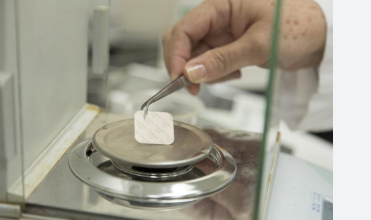Scaling Up: From Laboratory Development to Large-Scale Production of Transdermal Patches

Transdermal patches are an innovative method of administering medication via the skin, providing an efficient and secure method to administer drugs. It is important to note that the transdermal patch manufacturing procedure involves several steps to ensure their efficacy security, safety, and dependability.
1. Design and Formulation:
The first step in transdermal patch manufacturing is designing the patch and creating the system for delivery of drugs. This is the process of selecting the right drug that is compatible with transdermal administration. Factors such as the drug’s molecular size, its permeability, and stability are critical during this phase. The formulation includes deciding on the appropriate adhesive, backing material, as well as a release liner.
2. Material Selection:
The choice of material is essential when it comes to transdermal patch manufacturing. The patch typically comprises several layers, including the drug reservoir as well as a rate-controlling membrane one layer of adhesive, as well as finally a backing. Common materials are polymer matrixes for the drug reservoir as well as silicone or acrylate adhesives, and polyester or polyurethane for the backing. Each material must be biocompatible and able to deliver the drug in a timely manner for a long time.
3. Manufacturing Process:
The manufacturing process begins with the creation of your drug’s formulation. A pharmaceutical active ingredient (API) is mixed with excipients to form an homogeneous mix. This mixture is then applied on the material backing, which is usually done with techniques like lamination or coating. The rate-controlling layer is added to control the rate at which drugs are released. Then, the adhesive layer is positioned to ensure that the patch sticks tightly on the skin.
4. Cutting and Assembly:
When the layers are reassembled The patches are then cut into individual units using precise machines. This process ensures uniformity in dimensions and shape, which is essential for consistent drug delivery. After that, the patches will be put together with a liner protecting the patch that stops contamination and keeps the adhesive’s integrity until the patch is inserted.
5. Quality Control:
Quality control is an important element that is essential to transdermal patch manufacturing. Each batch of patches is subject to rigorous tests to make sure they are safe and of high quality standards. This includes tests for uniformity of the drug content, adhesion properties, and release rates. The patches are also evaluated for stability in order to ensure that they will be effective over their shelf-life.
6. Packaging:
The final step involves packaging patches in a manner that preserves their integrity and facilitates easy application. It is usually done by placing them individually in moisture-resistant pouches or foil wrappers. Proper packaging also includes labeling with dosage instructions and other relevant information.
The manufacturing of transdermal patches is a complicated procedure that requires precision and adherence to stringent quality standards. By understanding these key aspects, manufacturers can ensure that the innovative drug delivery systems are safe, efficient, and reliable for the patients.